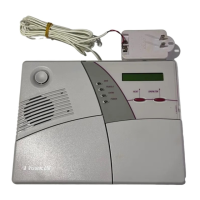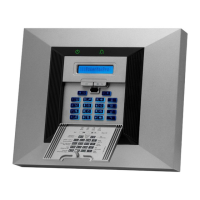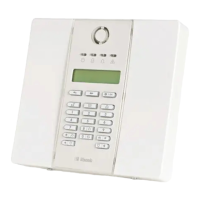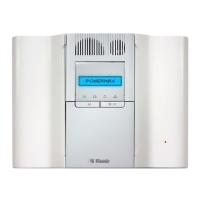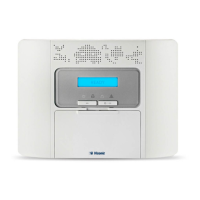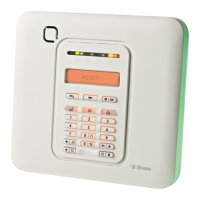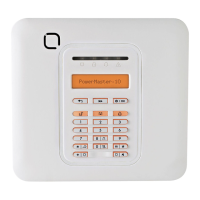READING ALARM MEMORY AND TROUBLE DATA
D-302755 PowerMaxComplete User's Guide 17
AC Supply Failure - There is no power and the
system is working on backup battery power (this
trouble is reported 5 minutes after its occurrence).
System Jammed - A radio-frequency signal is
blocking communication channel of sensors and
control panel.
Communication failure - A message could not
be sent to the central monitoring station or to a
private telephone (or a message was sent but
was not acknowledged).
CPU low battery - The backup battery within
the control panel is weak and must be replaced
(see Chapter 9 - Replacing Backup Battery).
CPU tamper - The control panel is being
tampered with.
Fuse Trouble - The siren fuse is burnt out.
Line Failure – There is a problem with the
telephone line.
IMPORTANT! If the trouble beeps bother you, disarm
the system again (even though it is already disarmed).
This will cancel the trouble beeps for 4 hours.
B. Investigating Trouble Sources
In a state of trouble, a flashing TRBL message is
displayed as shown in the following examples:
or, if the system is not ready for arming -
You can review the current troubles one by one, by
clicking the button.
EXAMPLE: The kitchen sensor - zone No. 9 - has been
inactive and the living room sensor - zone No. 15 - has
reported a low battery. However, these troubles do not
prevent the system from being “ready to arm”.
To investigate the source of trouble, proceed as follows:
In response to further clicking of , the
display will show details of other troubles (if any), or
will revert to the initial alternating displays (see
example above).
Reviewing Memory & Troubles at
the Same Time
If alarms / tamper events are retained in the alarm
memory and at the same time a state of trouble
exists, the display will behave as shown below:
or, if the system is not ready for arming -
Note (not applicable to PowerMaxComplete that does
not have VOICE feature): When a voice message is in
memory, the MSG display will also appear (as shown
in Chapter 3 - Recording a Message).
To read status information - memory data, open zones
and trouble sources (in this order) - click the
button repeatedly. The memory content
will be displayed first, in the same manner shown in
Chapter 5 - Reviewing Alarm / Tamper Memory. If the
system is not ready, open zone information will follow
in the same manner as shown in Chapter 2 -
Preparing to Arm. Trouble sources will be displayed
last, in the same manner shown in Chapter 5 -
Reviewing Trouble Information.
Correcting Trouble Situations
The trouble indications (illuminated TROUBLE
indicator and flashing TRBL message) are cleared
once you eliminate the cause for trouble. If you do
not know how to cope with a trouble situation,
report it to your installer and seek his advice.
INACTIVITY: Once an inactive sensor or wireless
commander renews its periodical transmissions, the
inactivity trouble no longer exists and will no longer
be indicated by the control panel.
LOW BATTERY: Upon replacing the battery in a
wireless device in a keyfob or in a wireless
commander that reported a low battery, the next
transmission made by the relevant sensor will include
a “battery restored” message, and “low battery” will no
longer be indicated by the control panel.
SYSTEM TROUBLE: Correction of any one of the
system troubles is automatically sensed by the
control panel, and the trouble indication is cleared
accordingly.
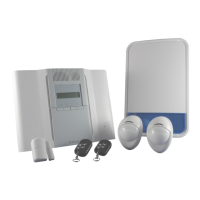
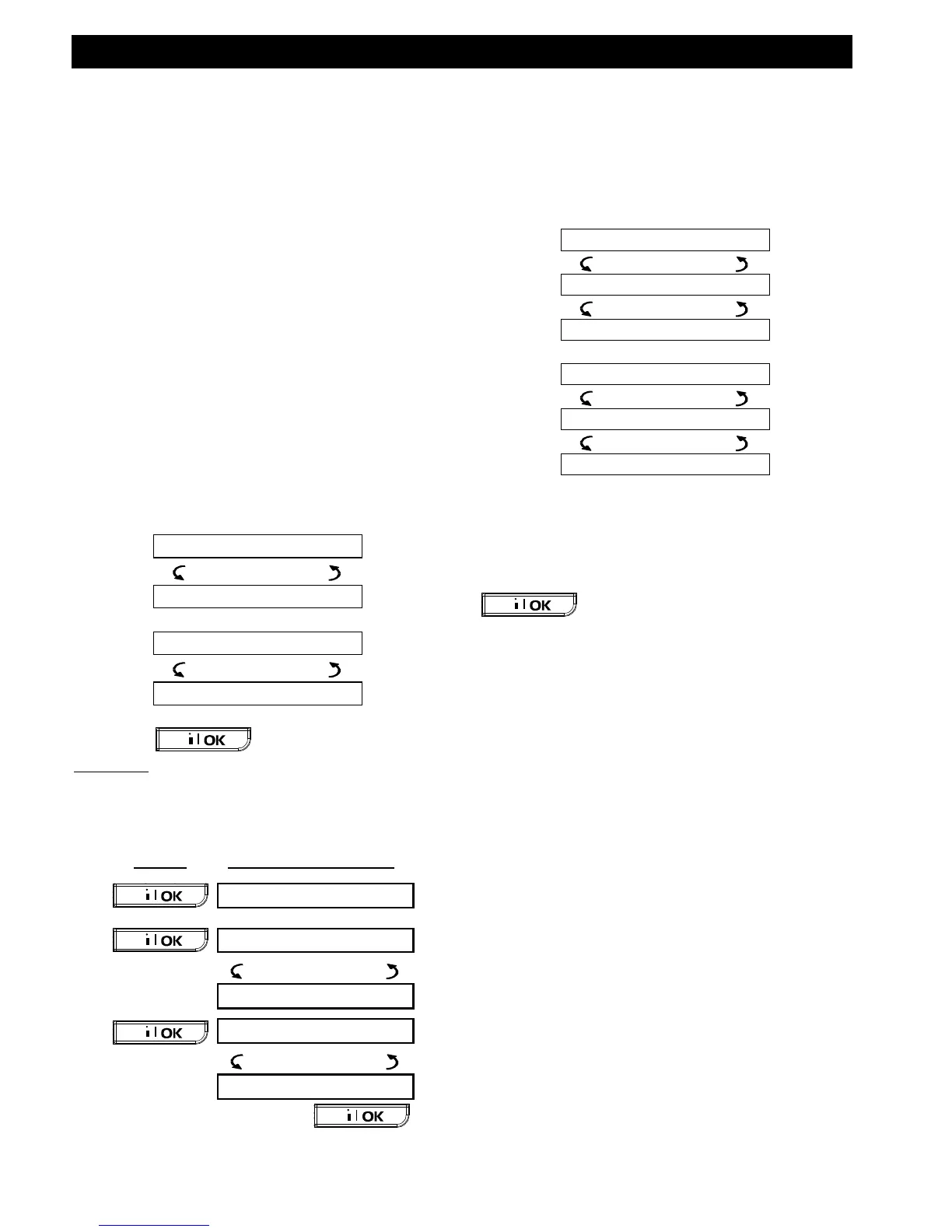